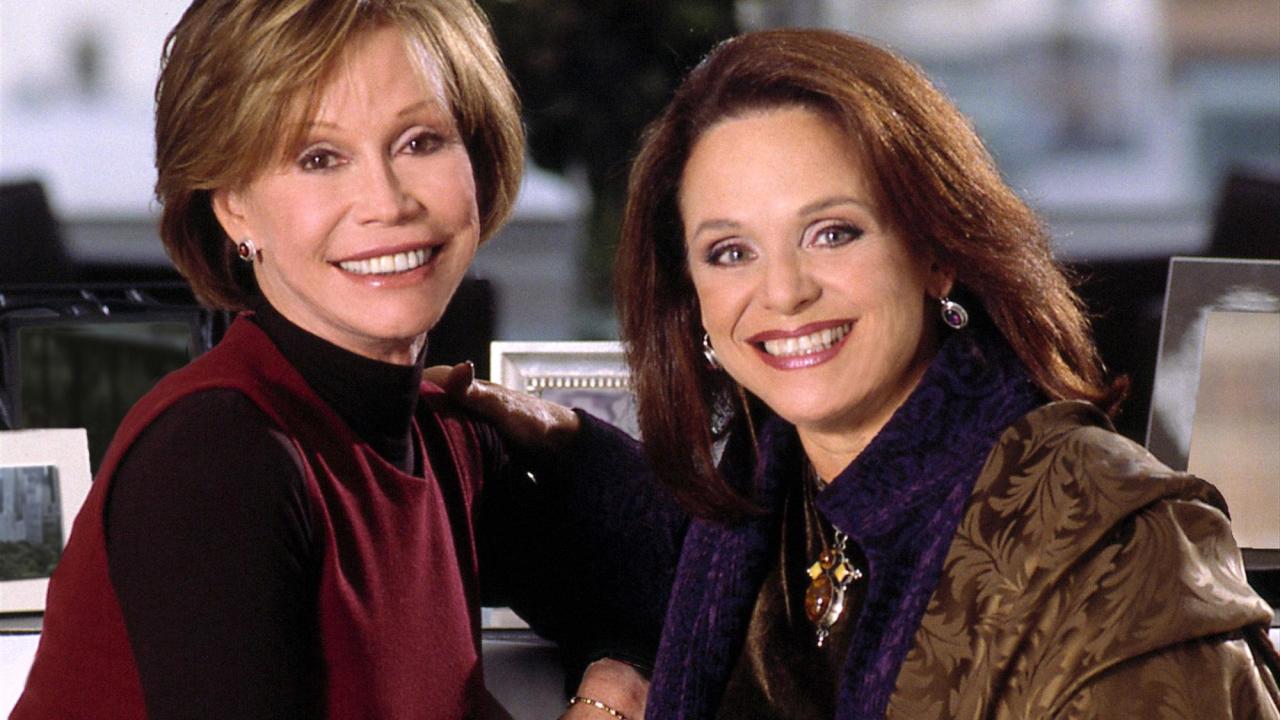- Awards
- 15
Before my time, so I don't know how aware contemporaneous audiences were of the entertainment upheavals they were witnessing. Certainly I think AITF's impact was hardly subtle. In '69, American TV comedies were pablum. AITF had to feel like a full frontal assault, even if couched in domestic sitcom coziness. MTM's impact was more subtle and so perhaps only fully apparent in retrospect how it had one foot in the past and one in the future.
Sadly, it's not before my time. Yes, American TV in the late-'60s was bending over backwards to not reflect the topicality going on in the culture at the time -- the only reflection of it was the clothes and, sometimes, the music. The sitcoms were uber-repetitive goofy things like I DREAM OF JEANNIE and the rural shows.
AITF was a wildly impactful show when it premiered in February 1971, just five months after MTM. It was so loudly important a show that AITF became the top program of the decade, ranking at #1 for five consecutive years, helping kick off an era in which the TV sitcom genre became a literal agent of social change.
MTM's ratings, although quite good, were not quite as stratospheric as those of AITF (well, no one's were) but Mary's show was very well appreciated even at the time -- a quieter yet impossible to ignore artifact of the period which received more Emmy nominations (and more Emmy wins) than any other program in television history up until that time ... a record which wouldn't be surpassed for decades when such triumphs would seem somehow easier to achieve by less-distinct material.
Even AITF's successes with the critics, impressed with the in-your-face-politics and Nielsen ratings, would be usurped by MTM with its more low-key creative energy and freshness.
Also, both shows were aired on the same day and became the anchors for CBS' near-legendary Saturday night line-up from the early-'70s: ALL IN THE FAMILY, (M*A*S*H, for a while), MARY TYLER MOORE, THE BOB NEWHART SHOW and THE CAROL BURNETT SHOW.
Mary's success with her eponymous series didn't exist in a vacuum; she was well known to American TV audiences by way of her co-starring role on THE DICK VAN DYKE SHOW the previous decade. If MTM was the sitcom masterpiece of the 70s, DVD was its 60s counterpart. On DVD, Mary was the lead actor's spouse, an unusually sexy housewife named Laura Petrie. Laurie's comedic image was heavily inspired by Lucy Ricardo (Lucille Ball), the star of the best sitcom of the 50s, I LOVE LUCY. And so, when Mary Richards struck out to make it on her own she carried with her two decades of audience familiarity; early Mary Richards feels very much like Laurie Petrie after leaving her clumsy husband in the suburbs. In fact, Mary was originally meant to be a divorcee but network execs feared audiences would think Laurie had left Rob. But Mary Richards is also symbolic (reluctantly on the part of the actress) of the second wave feminism that was in full bloom and an absolutely vital step in the development of women in sitcoms
Yes, Mary was the female lead in the two most-respected sitcoms from two consecutive decades, winning a slew of personal Emmys for both -- and in the fifth and final season of TDVDS, Laura Petrie seems to be rockin' some serious early-Mary Richards.
The gentle feminism of the MTM show was, as you say, probably more effective because it didn't seem to have an axe to grind (unlike AITF and, twenty years later, MURPHY BROWN). Mary Richards would gradually discover certain gender-based incongruities in the workplace as time went on -- which caused those discoveries to resonate with audiences more lastingly than the "I'm-going-to-teach-you-worthless-bastards-how-to-produce-the-goddamned-news!" approach Candace Bergen's series (and others) did later. (Not that I dislike MURPHY BROWN all that much, but all the comic obnoxiousness gets a bit tired pretty quickly).
It's similar to the effect that the now-forgotten POLICE WOMAN with Angie Dickinson had -- a show the feminists hated -- which drove an entire generation of women into law enforcement largely because the lead was an affable lady who didn't seem to hate her male co-workers (like later shows, where they did). Angie made it all seem accessible, and so did Mary Richards. (There was, for those who are zodiacally receptive, the similar dynamic of the overly-tough Scorpio Rising male boss -- Ed Asner and Earl Holliman -- so contemptuous-yet-admiring of the vulnerable, melancholy Aries Rising female underling -- Mary and Angie). But despite its influence in hiring at the police departments, the activist feminists were somewhat successful in pulling down Angie's show, and the quality began stumbling quickly. So it's not revered in the way CAGNEY & LACEY (a good show, and one the feminists adored) was a few years later.
Mary was more liberal back then (before she slipped into her Jon Voight-esque old-person conservative shift rightward) and asserted that the activists' atrocious behavior at protests for the ERA (Equal Rights Amendment) had a lot to do with why the measure failed -- and Mary was at some of those protests, witnessing the misbehavior.
Her creator/producers were James L. Brooks and Allen Burns (who Mary's second husband, Grant Tinker, cleverly put together to make a show for his wife, a show that would lead to the creation of MTM Enterprises, a small, chic production company run by Grant and Mary through the '80s, although Mary admitted she didn't enjoy running a business and stayed in the background despite the company acronym that bore her initials). Brooks & Burns cheekily admitted they "exploited for our own profit" second wave feminism in their development of Mary's show, but they had no brittle agenda in doing so. Nor did Mary.
Decades later, Mary Tyler Moore would criticize Gloria Steinem's anti-mother rhetoric as "dead wrong."
1971: Doris and Mary and Angie, oh my!

Last edited:



